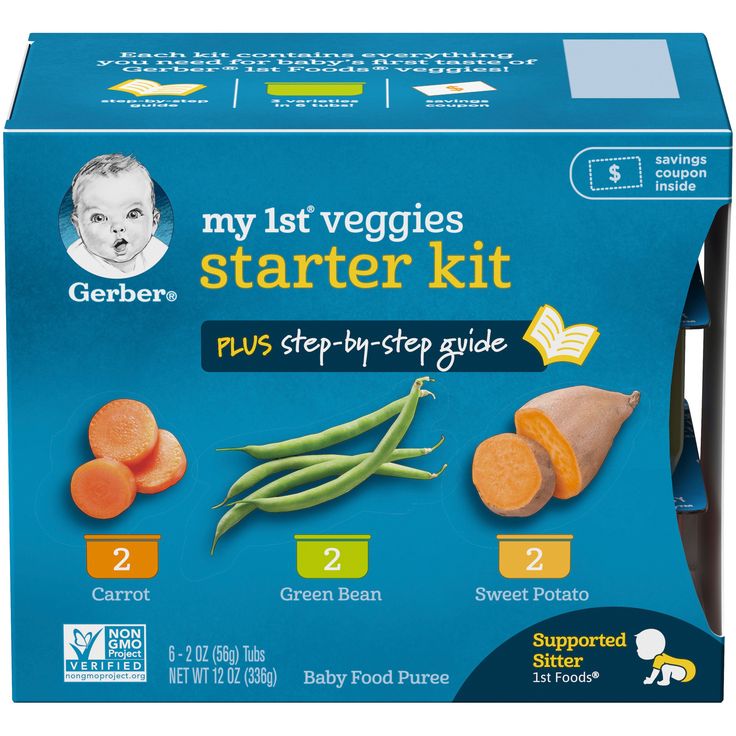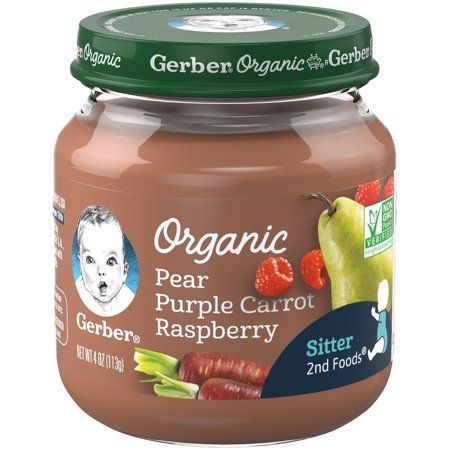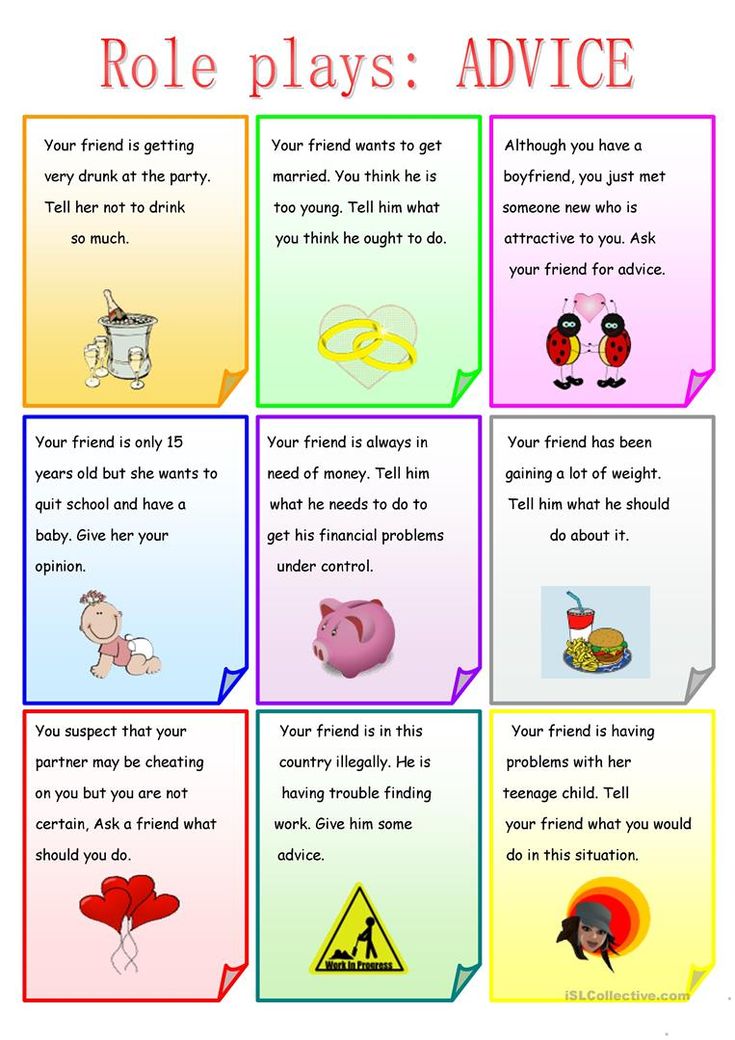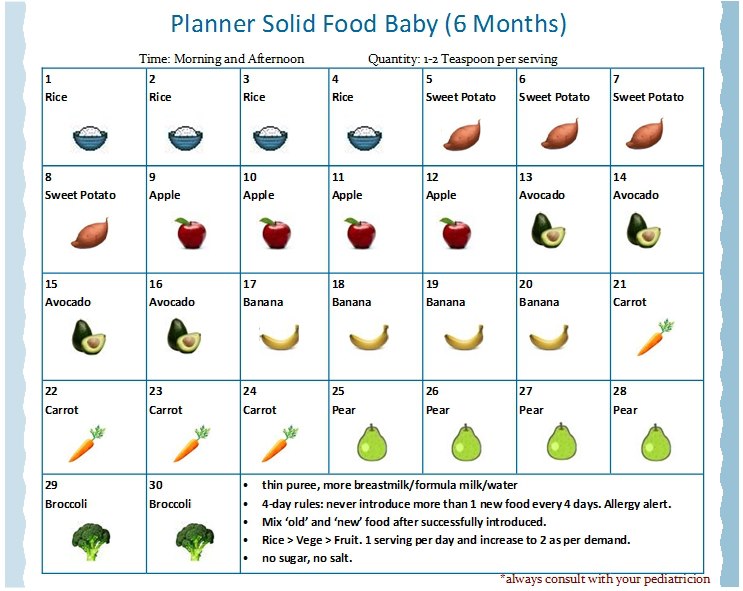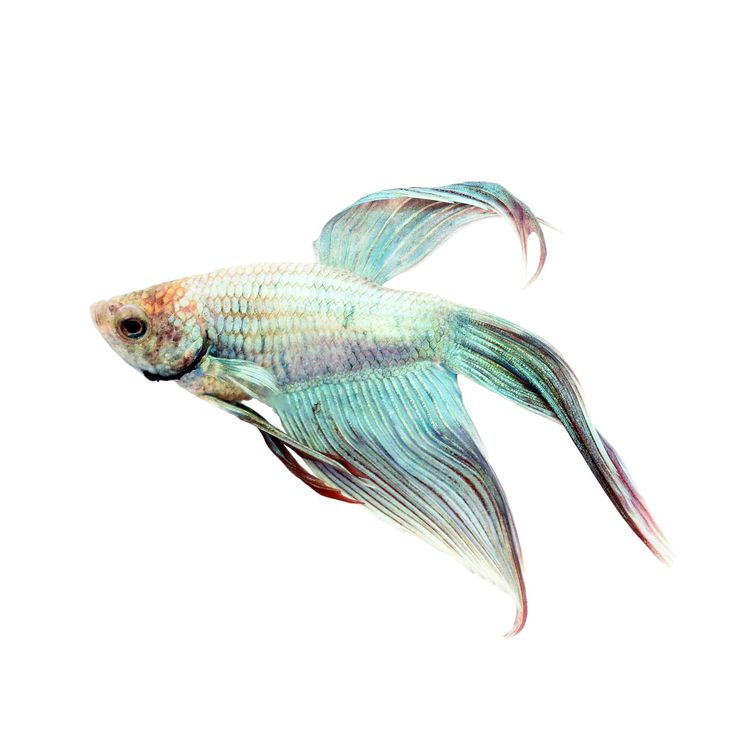Gerber baby food age chart
Does It Offer Complete Nutrition?
Is your baby finally starting on solid foods? If that’s the case, you as a parent might be a little overwhelmed on how to wean them off the breast (or bottle). You might have spent some time on the internet about how to prepare baby food at home and also come across options of baby food in jars, like Gerber baby food. If you find commercially-prepared baby food appealing, particularly the Gerber brand, this article will be helpful.
About Gerber Baby FoodGerber has been in the industry of producing baby food since 1927. In the Philippines, they are under Nestle and mostly offer 100% pureed vegetables and fruits with zero added salt, sugar, color, preservatives, and flavors.
On their website, they highlighted that “Every jar of GERBER® is carefully grown using our Clean Fields Farming™ practices. This ensures our purees are not only nutritious but also wholesome and safe for our little ones’ tummies.”
Gerber baby food can be given to babies 6 months to 2 years old. But, of course, if you plan on giving it to your baby once they turn 6 months, you still have to take into account their readiness for solid foods. You must also consult your Pediatrician for this plan in order to give you proper advice and guidance.
Gerber has several products. First Foods offer single-ingredient puree (carrot, banana, squash, etc.) These are great for introducing your baby to the taste of fruits and vegetables ONE AT A TIME. They also offer Second Foods where one jar contains at least two fruits and/or vegetables (banana & strawberry, apple & blueberry, etc.)
You can give Gerber to your baby at room temperature or warmed (just test the temperature beforehand). Once opened, you can refrigerate what’s left but it should be consumed within 24 hours. You must also use a non-metal spoon.
IMPORTANT:
A jar of Gerber is NOT complete nutrition for your baby. Particularly when they are just starting on solids, you must still give them breast milk or formula milk. Gerber can be a good option if you want to introduce the taste of different fruits and vegetables to your baby. As they grow older, they’ll need more. Hence, you need to provide them with a variety of fruits, vegetables, starch, lean protein, dairy, and healthy fats.
Gerber can be a good option if you want to introduce the taste of different fruits and vegetables to your baby. As they grow older, they’ll need more. Hence, you need to provide them with a variety of fruits, vegetables, starch, lean protein, dairy, and healthy fats.
Don’t start with solids until your baby is ready to make the transition from breast milk or formula. It’s important to wait until your baby can sit up on his own, has lost the tongue-thrust reflex (the tendency of an infant to push out solid food with his tongue), and shows signs of interest in foods other than breast milk or formula.
A newborn will begin eating solid foods at around 6 months, but every child is different. Some may be ready earlier, while others may not show interest until they are a bit older. If you’re worried that your child isn’t getting enough nutrients from breast milk or formula alone after 6 months of age, talk to your doctor about introducing solids.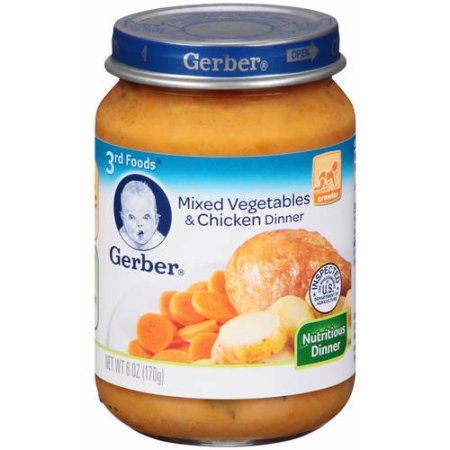
If you decide to prepare their food along with Gerber baby food (or other commercially-prepared foods), you can check out this article:
The following reminders would be helpful:
Heat pureed fruits and vegetablesDo not give your baby pureed raw vegetables or fruits. Heat the puree at about 180 F or at a simmering temperature. Let cool and serve.
Don’t add sugar, salt, or honey to your baby’s foodYou should avoid adding sugar, salt, and honey to your baby’s food. Honey CANNOT be given until they are a year old. Avoid artificial sweeteners, too.
If you want to add something sweet, use a small amount of fruit or vegetable puree instead. These can be mixed with breast milk or formula if it suits your child’s taste – but make sure that there is no added sugar in the puree itself!
Wait a little bit longer for foods containing allergensAvoid nuts. If you are unsure of what your baby is allergic to, start with ONE food containing an allergen first.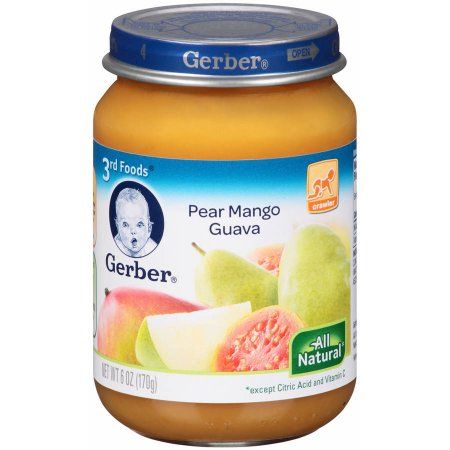 Give them a small amount and just gradually increase as you see that they can tolerate it. Pediatricians now encourage babies to eat eggs and shellfish in order to desensitize them if they have allergies.
Give them a small amount and just gradually increase as you see that they can tolerate it. Pediatricians now encourage babies to eat eggs and shellfish in order to desensitize them if they have allergies.
It is important to introduce new textures gradually. This is because your baby may not be ready for all foods, so it’s best to proceed slowly and patiently.
You should not give them:
- Food that is too hot or too cold. This can burn their mouth or make them feel sick.
- Spicy and sour food. They don’t give them good experience with solids and can upset their stomach.
- Sugary foods. Remember that your baby doesn’t need extra sugar.
Key Takeaways
Whether you choose to introduce solids by giving them Gerber baby food or home-prepared food, the most important thing is to keep your baby’s first foods simple and healthy. As you introduce new textures and flavors, remember that every baby is unique. Some will take to solids more quickly than others—and there’s nothing wrong with that! If your baby seems ready for a new type of food but doesn’t seem to enjoy it, don’t force them to eat more than they want. Try again in a few days when they might be more receptive or try another food instead.
Some will take to solids more quickly than others—and there’s nothing wrong with that! If your baby seems ready for a new type of food but doesn’t seem to enjoy it, don’t force them to eat more than they want. Try again in a few days when they might be more receptive or try another food instead.
Learn more about Baby Nutrition here.
The 3 baby food stages: What foods and when
Making the leap from breast milk or formula to solids and then eventually to table food is an exciting time. But it’s also a little confusing because there isn’t a one-size-fits-all rule when it comes to baby food stages. While one child may happily take to pureed carrots at 6 months, another may purse their lips at anything but a breast or bottle until 8 months.
To simplify the whole process, here’s a general rule of thumb to keep in mind: Most foods are OK to give to babies in the first year, as long as they’re properly prepared. And if you’re concerned about food storage, read more from our experts on how long baby food lasts.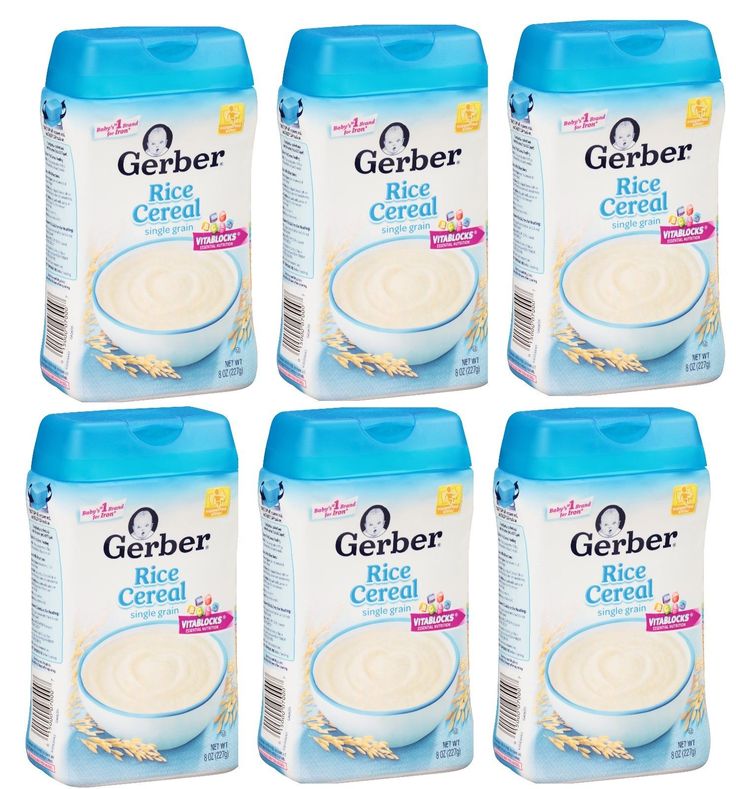
Here’s the quick lowdown on what to feed baby and when:
- Stage 1: Purees (4 to 6 months).
- Stage 2: Thicker consistency (6 to 9 months).
- Stage 3: Soft, chewable chunks (10 to 12 months).
“With the exception of raw or cooked honey, which shouldn’t be consumed until 12 months because of the risk of infantile botulism, babies can have any food that is texturally appropriate for their developmental feeding stage,” says Dr. Kristen Treegoob, a pediatrician at Children’s Hospital of Philadelphia.
In other words, it’s perfectly fine to give both a 6- and 12-month-old peas, but for the 6-month-old, they need to be pureed.
In the past, parents have been advised to start their baby with single-grain cereals, such as rice cereal, but the American Academy of Pediatrics (AAP) now says there’s “no medical evidence that introducing solid foods in any particular order has an advantage for your baby” — nutritionally or when it comes to long-term food preferences.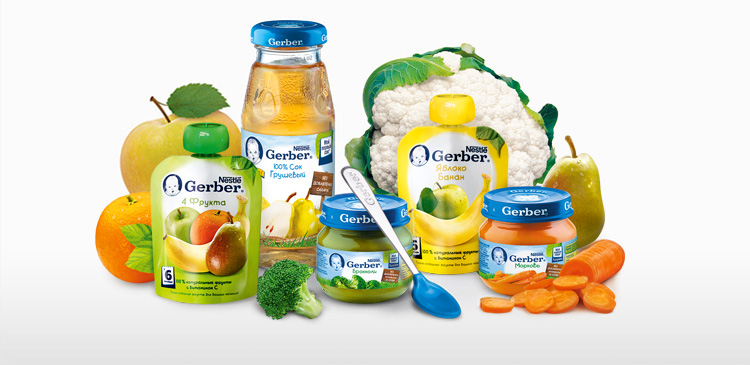 (So, when your Aunt Joanne tells you that your baby will be a vegetable-hater for life if you start off with applesauce, she’s wrong.)
(So, when your Aunt Joanne tells you that your baby will be a vegetable-hater for life if you start off with applesauce, she’s wrong.)
All of this said, there is a method to the messy madness that is the three stages of baby food. In order to make things less complicated — and more delicious — we tapped top experts and veteran parents to find out everything you need to know about feeding little ones at every stage (plus, we included a handy baby food stages chart). All you have to do now is serve the food and clean the high chair!
Stage 1 (4 to 6 months): What you need to know
The fun begins! Stage 1 baby food is typically for babies who are between the ages of 4 months and 6 months. But as with all things parenting-related, it’s important to keep in mind that each baby is different, and there’s no hard and fast rule for starting solids.
“While the AAP recommends exclusively breastfeeding from birth to age 6 months, it’s important to remember that not every baby is exclusively breastfed,” says Dr.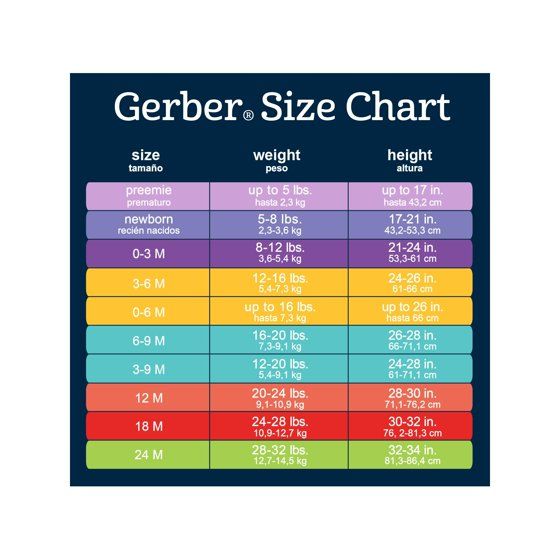 Zulma Laracuente, a pediatrician in Alexandria, Louisiana. “Also, some babies show signs of readiness to start food earlier than others. You know your baby best.”
Zulma Laracuente, a pediatrician in Alexandria, Louisiana. “Also, some babies show signs of readiness to start food earlier than others. You know your baby best.”
Solids that fall under the Stage 1 category are thin and smooth in texture — not much thicker than breast milk or formula — and contain a single ingredient. If you’re making your baby’s food at home, make sure it’s blended to an almost-watery puree.
“Stage 1 baby foods should have no chunks whatsoever,” says Jenifer Thompson, registered dietician and advanced practice dietician at Johns Hopkins in Baltimore. “Formula or breast milk can be added to the purees to make them thinner.”
While there’s no specific food parents need to start with, many pediatricians recommend beginning with iron-rich foods, such as iron-fortified cereals or pureed meats.
“The reason we advise introducing solids at 6 months and starting with iron-containing foods is because iron stores that were built up during pregnancy are depleting, and iron is important for infants’ brain development,” says Dr.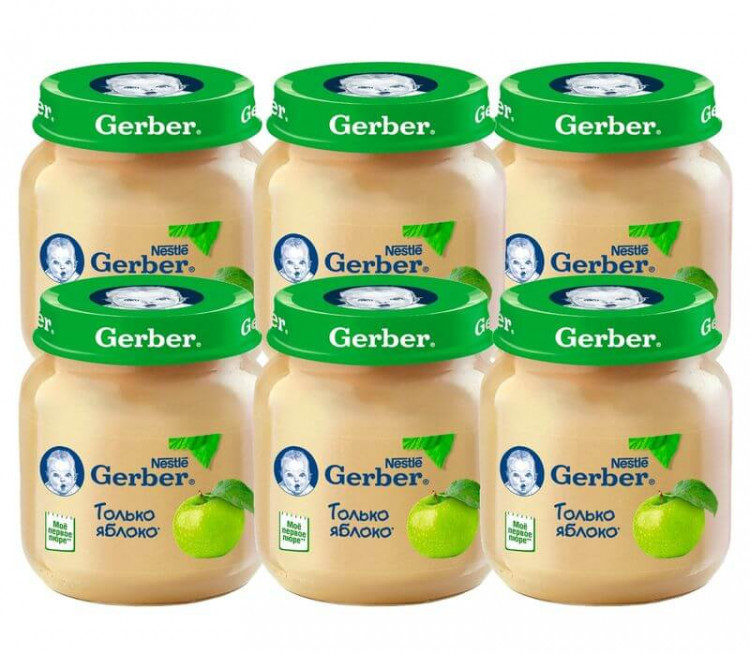 Melanie Custer, a pediatrician at Deaconess Clinic in Evansville, Indiana.
Melanie Custer, a pediatrician at Deaconess Clinic in Evansville, Indiana.
Custer also says that babies should “absolutely not” decrease their breast milk or formula when they first start off with solids.
“Infants still should receive 24 to 32 ounces of formula or breast milk each day,” she says. “Solids at this point are more of a snack, with baby eating about 3 to 4 tablespoons once or twice a day.”
How to tell your baby is ready for Stage 1
According to Treegoob, here are the signs your baby is prepared to start Stage 1 foods:
- They’re showing an interest in what family members are eating.
- They’re learning to open their mouths for a spoon.
- They’ve outgrown the involuntary habit of pushing food and spoons out of their mouth with their tongue.
- They have steady head control.
- They have the ability to move food from a spoon to their throat and swallow without choking.
Stage 2 (6 to 9 months): What you need to know
Time to mix it up! While Stage 2 solids are still basically mush, food has a little more texture at this point, as well as a few soft chunks.
“Stage 2 baby foods are thicker in consistency than Stage 1 purees, and many of the jars you find in stores have some small mashable bits in them,” says Treegoob. “These are great for infants who have done well with Stage 1 but who are not quite ready to chew. The typical age for Stage 2 is between 6 to 9 months.”
Treegoob also notes that the 7 to 9 month time frame is also when many babies begin modifying their breast milk or formula intake.
“As long as an infant’s weight remains on track and they’re drinking enough to stay hydrated, there isn’t a reason to worry if baby is showing interest in smaller or less frequent bottle or breastfeeds,” she says. “Infants typically take in somewhere between 24 to 32 ounces a day when they’re between 6 to 9 months.”
Whether you’re making your little one’s food on your own or getting it pre-made at the store, you have a little more room to play once you hit Stage 2.
“In addition to being thicker in consistency, Stage 2 foods usually have multiple ingredients, including some spices,” says Custer. “At this point, baby is usually taking in more food than they were in Stage 1, so it’s important to make sure they’re being introduced to a wide variety of foods from different food groups.”
“At this point, baby is usually taking in more food than they were in Stage 1, so it’s important to make sure they’re being introduced to a wide variety of foods from different food groups.”
According to the AAP, babies should be eating about 4 ounces of solids — about one small jar of baby food — at each of their meals.
How to tell your baby is ready for Stage 2
Once your baby has consistently been eating Stage 1 foods, they’re likely ready for the next step. Here are other signs to look for, according to Thompson:
- Their oral skills are continuing to develop.
- They’re consistently taking food in and swallowing when you offer it (and not spitting it out).
Stage 3 (9 to 12 months): What you need to know
Now, the true culinary adventure begins — Stage 3 foods! While some babies will still happily have mom and dad spoon-feed them mashed food at this age, many babies will have what you’re having at this point — and they’ll do it themselves, thank you very much.
“As soon as we thought he was ready — at about 9 months — we started giving my son softer, cut-up versions of whatever we were having for dinner,” says mom of two Jennifer Reilly, of New York City. “There was more cleanup, but I actually got to sit down and eat my meal!”
Once babies hit the age range for Stage 3 foods, most have the oral and fine motor skills to self-feed.
“Between 8 to 12 months, babies develop the pincer grasp ability and should be able to pick up small pieces of finger foods with their finger and thumb and bring it to their mouth,” says Thompson.
Technically speaking, Stage 3 solids are thicker, more sophisticated versions of the baby food your little one has already been eating (think vegetable and beef pilaf or tender chicken and stars), but also, they’re not necessary for everyone.
“Stage 3 food is starting to have chunks mixed in, in order to prepare baby for table foods,” says Custer. “But some babies wind up skipping this stage altogether and go straight to soft table foods. ”
”
While it’s perfectly fine to continue with Stage 3 foods up to your child’s first birthday, Treegoob advises letting your baby try their hand at “real food.” “Well-cooked veggies, ripe fruits, shredded meat, scrambled eggs, soft cheese and cooked pasta are all great options for babies this age,” she notes.
Between 9 months and 12 months is also when you’re likely to see a significant drop in how much breast milk or formula your baby is drinking.
“As babies continue to eat table foods, I’ve seen their breast milk or formula intake drop to as low as 16 to 20 ounces per day,” Treegoob says. “That said, some infants continue to show a heavy preference for breast milk or formula despite months of solid introduction. If you feel like your baby may be drinking excessive amounts of breast milk or formula, and they have no interest in food, I would recommend speaking with your pediatrician.”
How to tell your baby is ready for table food
Your child’s readiness to start table food will likely be more discernible than any other baby food stage.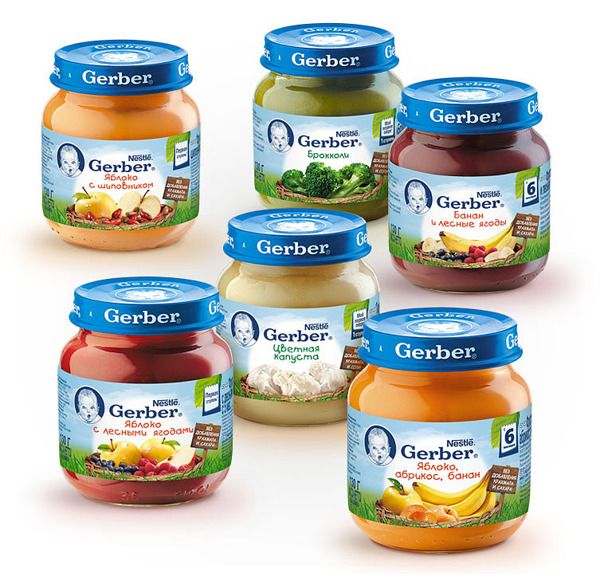 As long as they’re continuing to hone their oral skills, as well as their ability to pick food up and bring it to their mouth, you can count on them to let you know they’re ready for “big kid” food.
As long as they’re continuing to hone their oral skills, as well as their ability to pick food up and bring it to their mouth, you can count on them to let you know they’re ready for “big kid” food.
“My daughter looked like she was ready for pasta, eggs and basically anything we were eating shortly after she started solids,” says mom of two Julie Cortez of Brooklyn, New York. “We waited until about 8 months, when we knew she knew how to properly eat, and sure enough, she ate her whole plate on the first go! We completely skipped the Stage 3 jars of food.”
Follow these safe feeding must-knows
Even though your baby’s eating skills will continue to progress as they gain more experience, it’s important baby is always sitting upright, strapped in a high chair and never left unattended while eating. Also, make sure table food is always soft and cut into small pieces to avoid choking hazards. When first starting out with solids, be sure to wait a few days before giving them something new.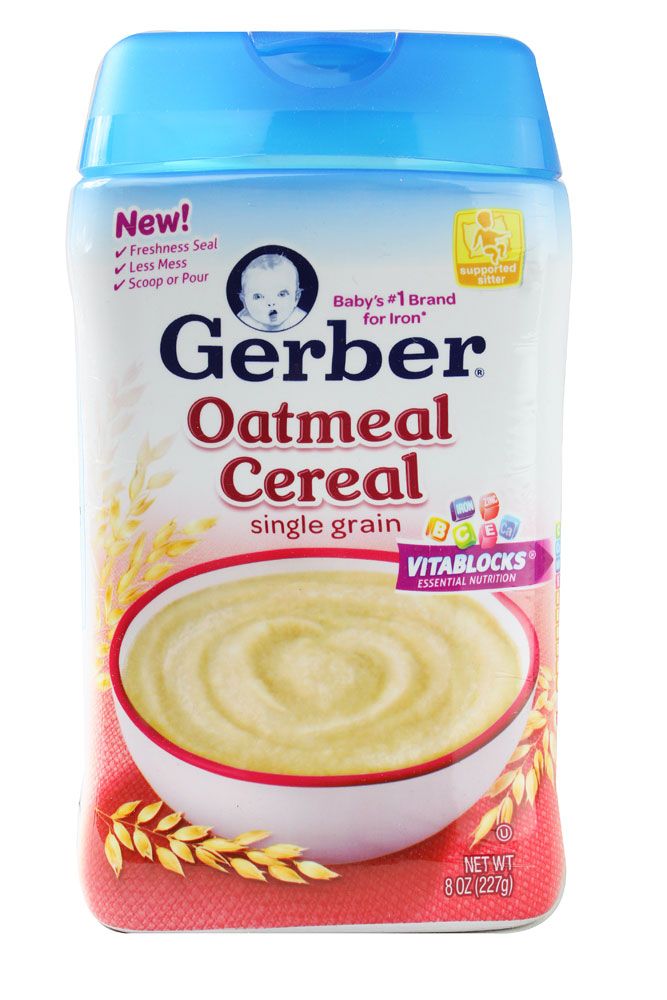
“This allows for observation for any adverse reaction or intolerance to the new food,” Thompson says.
And finally, be sure to give your baby a wide range of healthy food in order to expose them to a variety of tastes and textures — and don’t be discouraged if they don’t take to a specific food at first.
“If baby refuses a food or makes a strange face when eating, this may simply mean that it is a new food and unfamiliar to them,” Thompson says. “Try again. It may take 10 to 20 exposures of a new food before they accept it.”
Here’s more on every baby food stage:
- Stage 1 baby food.
- Stage 2 baby food.
- Stage 3 baby food.
From 4 to 6 months
Breast milk is the best food for your baby.
It is very important that the baby consumes breast milk for as long as possible.
The right age to start complementary foods
It is recommended to start introducing complementary foods into the baby's diet no earlier than 4 months, but no later than 6 months*.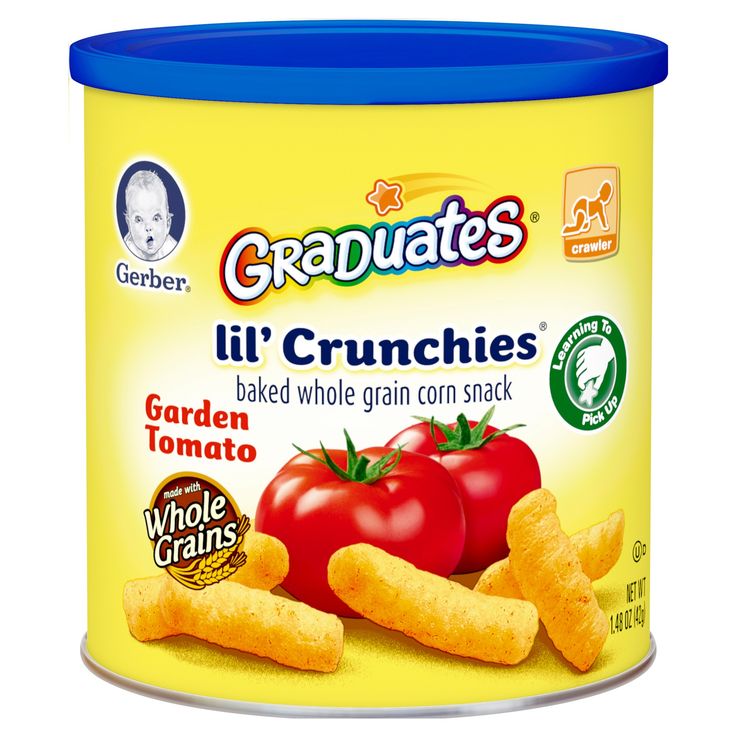 At this age, the baby is in the active phase of development and reacts with curiosity to everything new! Some babies at 4 to 5 months of age can no longer satisfy their appetite with breast milk alone and need complementary foods for healthy growth. Other children have enough breast milk, and they are ready for the introduction of complementary foods only after 6 months. The decision to start complementary foods should always be made according to your baby's development. Do you feel like your baby is not getting enough breast milk? Does your baby hold his head on his own, show interest in new foods or a spoon? Then it's time to start feeding. If in doubt, consult your pediatrician. nine0004
At this age, the baby is in the active phase of development and reacts with curiosity to everything new! Some babies at 4 to 5 months of age can no longer satisfy their appetite with breast milk alone and need complementary foods for healthy growth. Other children have enough breast milk, and they are ready for the introduction of complementary foods only after 6 months. The decision to start complementary foods should always be made according to your baby's development. Do you feel like your baby is not getting enough breast milk? Does your baby hold his head on his own, show interest in new foods or a spoon? Then it's time to start feeding. If in doubt, consult your pediatrician. nine0004
If your baby spits out the first spoonfuls of puree, be patient. After all, he must first learn to swallow it. Start with a few scoops and give your child time to get used to the new form of feeding.
*Recommendation of the Nutrition Committee of the European Society of Pediatric Gastroenterology, Hepatology and Nutrition (ESPGHAN)
Why is complementary food important for the baby?
After 4-6 months of life, mother's milk or milk formula alone is not enough to supply the child's body with all the nutrients and necessary energy.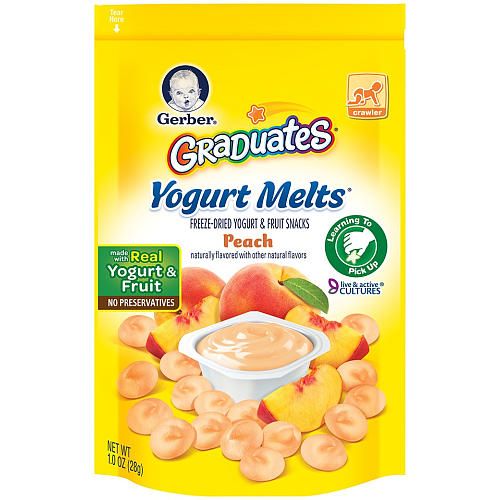 In addition, the transition to solid food trains the muscles of the mouth. And finally, with the introduction of complementary foods, the child will get acquainted with the variety of taste directions, which is also important for his development. nine0004
In addition, the transition to solid food trains the muscles of the mouth. And finally, with the introduction of complementary foods, the child will get acquainted with the variety of taste directions, which is also important for his development. nine0004
When to start complementary foods?
Gradually replace one breastfeed with complementary foods. First for lunch, then for dinner and finally for lunch. The mouse eats breakfast with the usual dairy food.
Starting complementary foods with HiPP products is easy. The first spoons will be vegetable or fruit purees HiPP:
First step: lunch
We recommend that you start complementary foods at lunchtime with HiPP vegetable puree (for example, "Zucchini. My first puree", "Cauliflower. My first puree" or "Broccoli .My first puree"). Then, for satiety, feed your baby as always: breast or bottle. The amount of vegetable puree can be increased daily by 1 spoon. Be patient if your baby does not immediately love vegetables.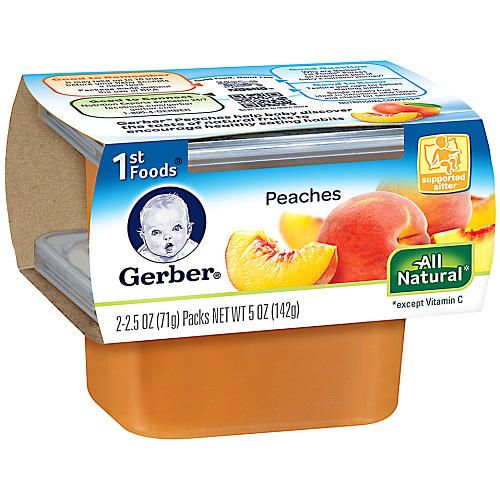 Try repeating the vegetable puree in the following days. Next week, you can expand your diet with other varieties of HiPP vegetables (for example, "Carrots. My first puree" or "Potatoes. My first puree"). nine0004
Try repeating the vegetable puree in the following days. Next week, you can expand your diet with other varieties of HiPP vegetables (for example, "Carrots. My first puree" or "Potatoes. My first puree"). nine0004
If your baby tolerates vegetables well, in the third week you can introduce grain porridge into the diet, and as a dessert, offer a few spoons of fruit puree enriched with vitamin C. Vitamin C helps to better absorb iron in the body.
Once your baby starts eating a whole serving of mashed potatoes for lunch, you can eliminate breast milk or formula during that meal.
Tip: Reheat as much puree as needed for feeding. Store leftover puree in a sealed jar in the refrigerator. Use the contents of the opened jar within a day. nine0004
Important! If you are using a microwave, please remove the lid before reheating puree. Stir after heating. To prevent damage to the jar, please use only a plastic spoon. Always check food temperature before feeding.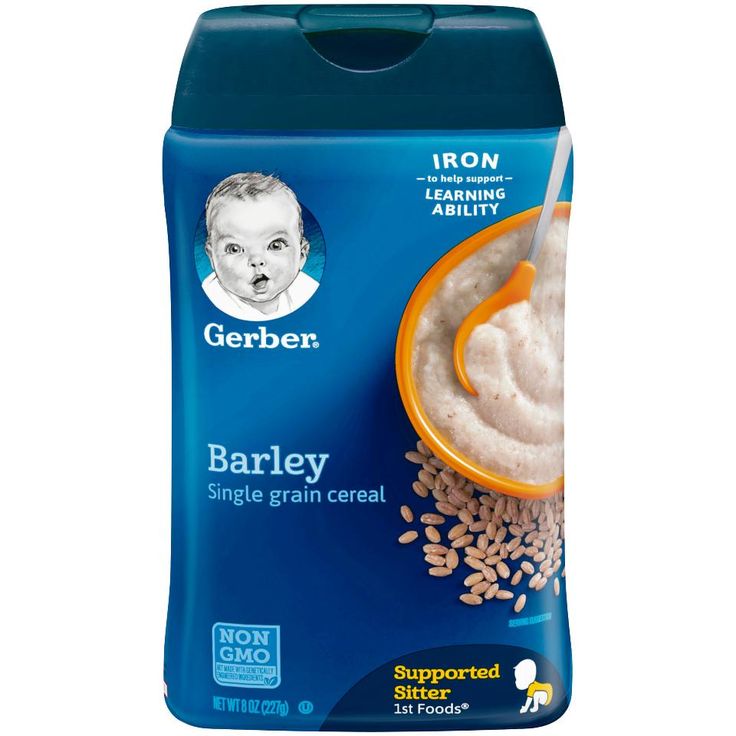
from 6 months
HiPP product groups can be recognized by the following color coding:
Learn more: Advice
Video: Weaning introduction - OB tips Video: Baby massage Diet
From birth to 4 months From 4 to 6 months From 6 months From 7 to 9 months From 10 months to 12 months
Food and drinkDigestion of the babyOn holiday with the babyAllergySleepCrying of the babyMotor skills and speech
Choice of complementary foods
No age restrictions from the first daysfrom 1 monthfrom 4 monthsfrom 5 monthsfrom 6 monthsfrom 7 monthsfrom 8 monthsfrom 9 monthsfrom 10 monthsfrom 12 months
Choose a product categoryVegetable purees - Vegetable puree from 4 months - Vegetable puree from 5 months - Vegetable puree from 6 months - Vegetable puree from 7 months - Vegetable puree from 8 months Fruit puree - from 4 months - from 5 months months - from 6 monthsMeat purees - Meat pureesMeat and vegetable menu - from 8 months - from 12 monthsFish and vegetable menu - from 9Soups - from 6 months - from 7 months - from 8 months - from 12 months - From 18 months "Good night" in jars - Cereal porridge with fruits in jarsDrinks - Health drinks - Granulated teas - Tea bags - JuicesCookies - Cookies
Complementary foods at 4 months | Useful tips from the Tyoma brand
It is well known that the ideal time to introduce complementary foods is between 4 and 6 months of age. The presence of a child's teeth or the ability to sit are not signs of a child's readiness for complementary foods. It is important that the baby does not have a reflex of pushing the spoon with his tongue, and he can swallow food thicker than breast milk or formula well. nine0004
The presence of a child's teeth or the ability to sit are not signs of a child's readiness for complementary foods. It is important that the baby does not have a reflex of pushing the spoon with his tongue, and he can swallow food thicker than breast milk or formula well. nine0004
The pediatrician will help determine the exact start date for complementary foods, and in most cases this is the golden mean of 5-5.5 months. But there are situations when complementary foods need to be started from 4 months, including even a child who is exclusively breastfed.
In what cases are complementary foods introduced from 4 months?
- The child is not gaining weight well or is lagging behind in physical development.
- The child has functional digestive disorders (regurgitation, constipation). nine0069
- The mother has little breast milk or it is poorly absorbed.
- The child has a reduced appetite or is not digesting formula well.

- The child has signs of iron deficiency (anemia).
- The child has a pronounced food interest: he watches with interest the food of adults, reaches for food.
- The child stopped eating formula and began to demand food more often. nine0069
How to start complementary foods at 4 months?
The first product of complementary foods, regardless of the age and type of feeding of the baby (breast or artificial), should be energy-intensive foods: either porridge or vegetable puree. Porridge can be chosen first if the child has loose or unstable stools, and also if the child is underweight. After 4-5 days from the beginning of the introduction of porridge, butter can be gradually added to it (up to 5 g per serving of porridge in 150 g) nine0004
Mashed vegetables can be the first meal of the day if a child is prone to constipation, when it is better to choose zucchini, which can have a mild laxative effect on the child's stool. Starting from the 4-5th day of the introduction of vegetable puree, vegetable oil can be gradually added to it (up to 5 g per serving of vegetables in 150 g).
Starting from the 4-5th day of the introduction of vegetable puree, vegetable oil can be gradually added to it (up to 5 g per serving of vegetables in 150 g).
What foods can be introduced into the diet of a child at 4 months?
Kashi
Of the first cereals, it is better to give preference to buckwheat or rice. They must be dairy-free and can be diluted with water or breast milk, or the mixture that the baby eats. Later, you can introduce corn and oatmeal. nine0004
Vegetables
The first vegetable puree can be zucchini, broccoli, or cauliflower.
Fruit
The third type of complementary food can be fruit puree from apples or pears. Later, you can introduce mashed banana or apricot. At first, fruit puree can not be given to the child separately, but it is better to mix it with cereal or vegetables so that the child does not begin to prefer the sweet taste of fruits. When the amount of fruit puree reaches 50 g or more, it can also be given separately, for example, after the child has eaten porridge or for an afternoon snack. nine0004
nine0004
Juices
Juices should not be the first feeding, in addition, they can not be introduced into the baby's first year of life at all, given their sweet taste and low nutritional value.
Can you make your own first meal?
You can prepare the first complementary foods yourself, but it is safer to use hypoallergenic monocomponent cereals or commercially produced purees prepared to high quality standards for baby food. In addition, it is important to consider that industrially produced baby cereals are often fortified with vitamins and minerals, which makes them especially useful for the first feeding. nine0004
How to start the introduction of a new product?
Complementary foods are introduced before breastfeeding or formula. The introduction of a new product should be gradual. But how is it?
- On day 1, give your baby 1 tsp. complementary foods before breastfeeding or formula
- On day 2 - 3 tsp.
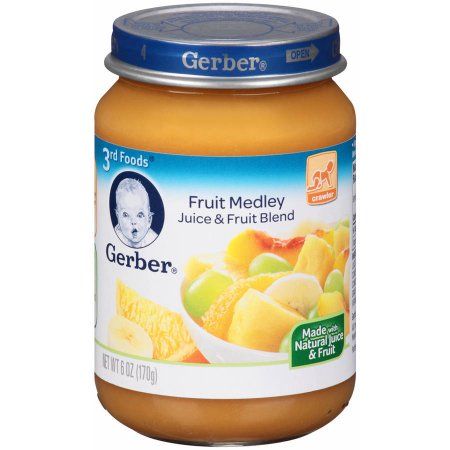 (15 g)
(15 g) - On day 3 - 6 tsp. (30 g)
- Day 4 - 50 g
- Day 5 - 70 g nine0069
- Day 7 - 100 g
- For 8-10 days - bring to 150 g.
Please note that if complementary foods are introduced from 4 months, then the introduction of 1 new product may take longer than the introduction of complementary foods from 5 or 6 months, namely up to 10 days or more, depending on the reaction of the baby.
Important!
If on the 8-10th day of the introduction of a new product, the baby still cannot eat 100-150 ml of porridge or puree at once, then this amount can be divided into 2 or even 3 doses, for example, give 50 ml of porridge in the morning, 50 ml in the afternoon and 50 ml in the evening. Why do this? So that the child gradually gets used not only to the new product, but also to its quantity. In the future, you need to try to gradually increase the one-time amount of the product to the age volume.